It was the summer of 2020. A new pregnancy, a new job, a new town, a new house. Throw in a trip to the other side of the world to receive a novel, in-utero treatment for an unborn child. All are exciting times for a young family–unless they are happening at the same time–and during a pandemic! But, with the love and support of their extended family, Emily and Isaac Nelson embarked on a journey they would never forget.
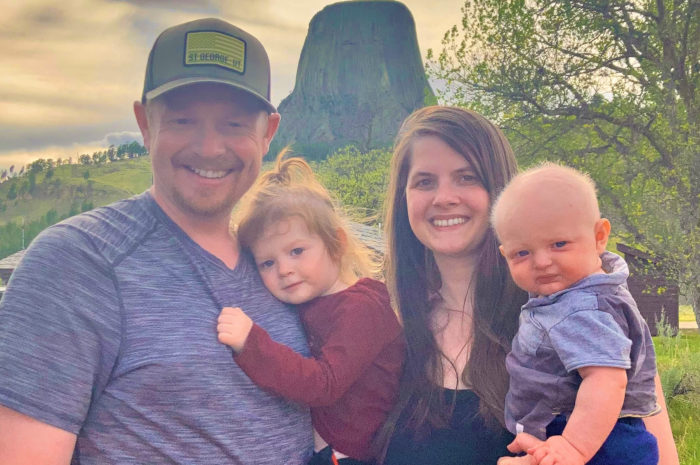
The Nelsons made an easy but challenging decision when they learned they were expecting their second child in 2020. A carrier for x-linked hypohidrotic ectodermal dysplasia (XLHED), Emily knew there was a 50% chance she could pass on the gene to their child.
If it was an affected boy, the parents knew they wanted him to receive a therapy called ER-004 which would replace a protein that his body would not be able to make due to XLHED. That protein is responsible for the development of sweat glands, teeth, hair, skin, and other structures.
Not yet available on the market, getting the therapy meant traveling to Erlangen, Germany to see Prof. Dr. Holm Schneider at the University Hospital Erlangen. Only two other mothers had been treated by that time with ER-004 but each of their children had positive results.
A Family Affair
XLHED runs in Emily’s family. Her dad, paternal grandma, two sisters, and several nieces all have the condition as did her late great-grandma. The family also suspects that an uncle’s death soon after birth may have been caused by XLHED.
Emily and her family had been following the National Foundation for Ectodermal Dysplasias’ XLHED research progress and the development of ER-004 for the last decade. She recalled getting an email from the NFED with information about the first boys who received ER-004 in utero and who developed working sweat glands.
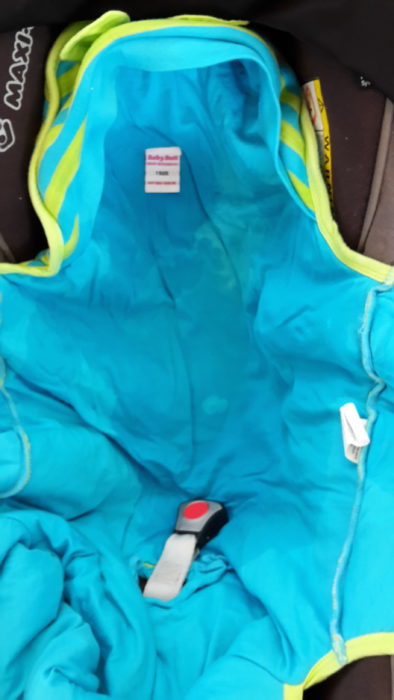
I remember seeing that email with the picture of the baby stroller showing sweat. I was so excited to see that progress. I had great hope that if I ever had a son, I could do for him something like that mom did for her boys.
Emily grew up watching her dad’s struggles and all he had to compensate for and overcome. Now pregnant, she and Isaac didn’t hesitate. They decided to try the therapy in the hope they could save their son from a lifetime of overheating and respiratory issues.
We didn’t want to have fears of overheating during those first few years of life when he can’t tell you if he’s hot. We wanted the peace of mind that he could sweat.
Both nurses, Emily and Isaac didn’t have any concerns about the therapy.
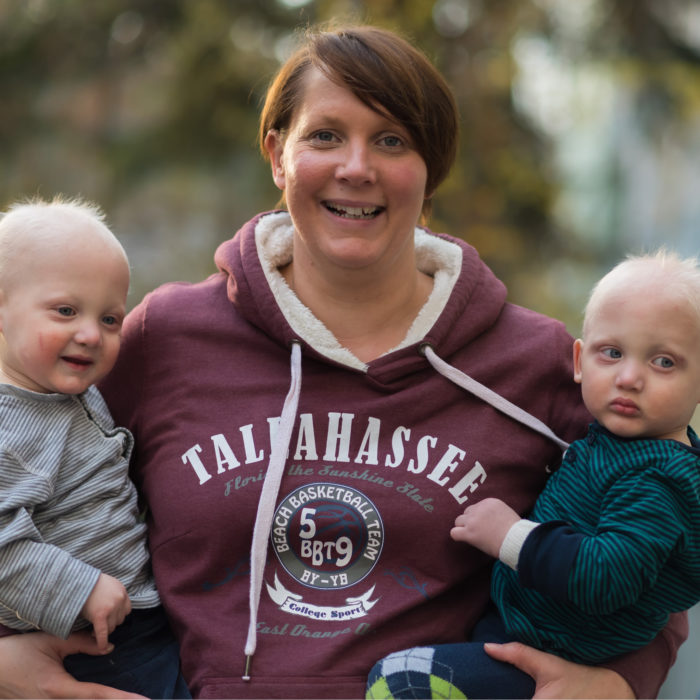
“The two women (who had already been treated in Germany) had set the path and they had no complications. We knew about the risks of repeated amniocentesis but knew they were done past the high risk weeks,” Emily said.
The Adventure Begins
Emily’s journey to get the therapy in Germany–during a pandemic–proved to be epic! The Nelson family learned they were expecting about the time they were planning to relocate from Ohio to Emily’s hometown in Spokane, Washington to be closer to her extended family.
It was a huge help that her older sister, Heather, who was also pregnant at the time, had researched Prof. Dr. Holm Schneider’s study with plans to participate herself. Ultimately, genetic testing showed that Heather’s son did not have XLHED. But her research helped Emily and Isaac know exactly what they would need to do.
Helping their unborn son became truly a family affair. While Emily and Isaac were packing boxes, her parents and siblings all stepped in to help her figure out how it could all work. Emily’s brother worked to find airline flights for her. Her sisters and parents wrote emails and made phone calls to arrange the extraordinary logistics.
Boy or Girl?
The Nelsons worked closely with Prof. Dr. Schneider every step of the way. At eight weeks into the pregnancy, they took a home test called Sneak Peek to learn they were having a boy. Planning was time-sensitive, as the therapy was only expected to work if their unborn baby received the therapy at 25, 28, and 31 weeks in utero. Emily had an amniocentesis at 15 weeks which confirmed it was a boy–and to genetically test that he was affected by XLHED. Several weeks passed as they awaited the results.
Emily, now 19 weeks pregnant, finally got the confirmation that their child was a boy affected by XLHED. They had just a few weeks to get all the moving parts in place!
Prof. Dr. Schneider worked diligently to get things approved for them to receive the treatment. There were many phone calls, Skypes, and emails. Getting approval to travel to Germany during a pandemic was difficult to say the least! Medical was not a sufficient reason. Prof. Dr. Schneider had to work with the German police to make it happen.
At the same time, the Nelsons moved to Spokane in late July! Because she had quit her job as a nurse in Ohio, she was grateful to have the flexibility of not working.
After just two weeks in their new home, Emily was boarding an airplane to travel around the world in a pandemic in an attempt to get their unborn son a promising therapy. She would stay in Germany for a month to receive the first and second doses at 25 and 28 weeks. The Nelsons felt it was too risky for her to come home after the first dose. Given the pandemic, they feared she may not be able to travel back with circumstances around COVID often changing.
Ready to depart, Emily took it all in.
“There were a lot of tears. But, I just knew it was a short term, small sacrifice for my son to possibly have a lifetime change.”
Treatment Begins!
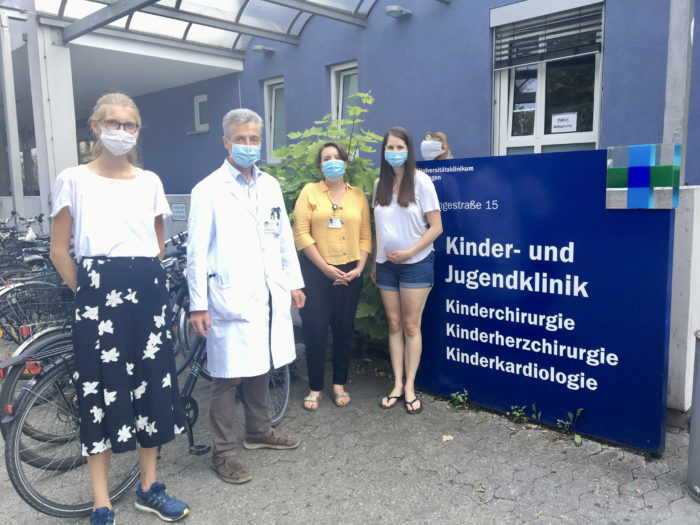
After 25 hours of travel with COVID tests before and after, Emily, now 24 weeks pregnant landed in Nuremberg, Germany. A taxi took her to Erlangen where she met Prof. Dr. Schneider and his team. They helped her get checked into the Ronald McDonald House where she would be staying.
In the next week, she had an ultrasound scan to estimate her unborn son’s weight which would determine the dosage of ER-004. The following day, she and her son received ER-004 through an ultrasound-guided amniocentesis.
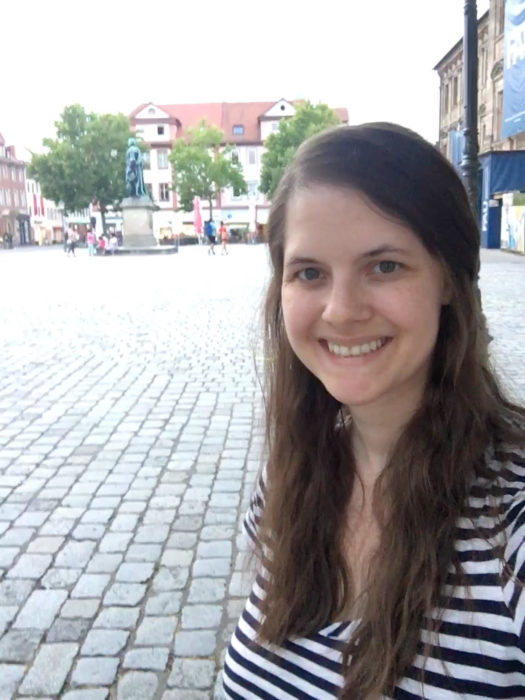
Emily then had a few weeks to pass until they repeated the procedure with the second dose. She set off on foot to explore Erlangen and other German towns each day which helped keep her mind off everything that was happening. Back home, Isaac was starting his new job, learning where things were in the new town and being a single dad to Charlotte, their one-year-old daughter.
I am the type who deals with things moment by moment and then processes it later. It all worked well in retrospect. I worked to have a routine and schedule for Charlotte and was thankful for the help from my in-laws. I feel so much gratitude for the people doing the research and putting things in place.
– Isaac
Emily’s parents took care of Charlotte when Isaac worked or needed help. Emily missed them terribly, especially her daughter.
With an 8-hour time difference, Emily often had to wake up at 3 a.m. so that she could Skype with Isaac and Charlotte.
Their unborn son received his second dose of ER-004 when Emily was 28 weeks pregnant. She then flew home for her 30th birthday and to see her family before returning to Erlangen for the third and final dose at 31 weeks. She is the first to receive a third dose. The two moms who had been treated previously received one and two, respectively. The third dose was added to the protocol with hope that it would help with the development of the secondary teeth.
“We wanted to do everything we could to get all three injections. In my first ultrasound before the first treatment, they detected four tooth buds. In the ultrasound before the third dosing, they thought they found a few more” Emily said.
The White Haired Warrior Arrives
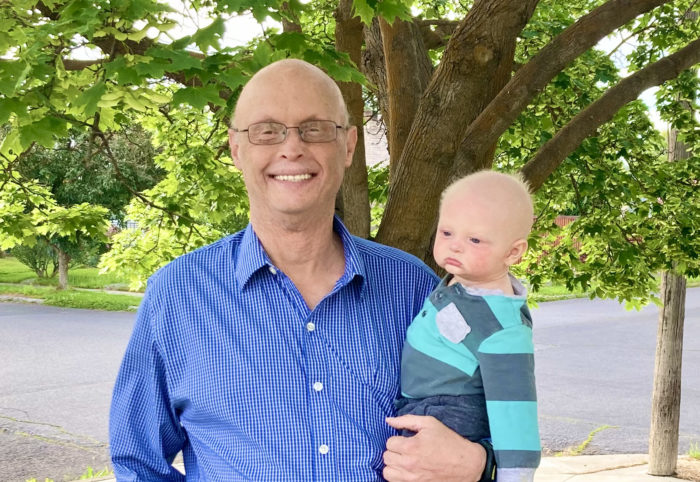
That November, Emily delivered a healthy son, Finley Martin Nelson, back home in Spokane. He’s aptly named, as Finley means “white haired warrior” in Scottish. Emily said it was really special to see her dad holding Finley for the first time.
Knowing Finley could have a different, hopefully easier, experience than my dad – it was a relief.
– Emily
Finley is a “hungry dude” who’s eating well and gaining weight, according to Isaac. He’s experienced some eczema on his face, which may or may not be related to XLHED. The condition also impacts salivary glands but Finley is drooling! So far, the Nelsons say their active baby has not had any respiratory problems nor any issues with overheating.
A local dermatologist checked Finley for sweat pores and sent the results to Prof. Dr. Schneider. He had more than usual for someone with XLHED but possibly not the normal amount, Emily said. That will be exactly determined later with a special microscope.
We don’t think his body temperature is an issue. He doesn’t like to sleep in his bed. We don’t know if it’s because he’s all wet from being sweaty but he gets fussy.
– Isaac
Mom and son are returning to Erlangen in August to meet with Prof. Dr. Schneider and his team for a follow-up visit. But, this time, they aren’t going alone.
A Shared Experience
After returning from Germany, Emily had befriended another NFED mom, Laura Reiser. A then pregnant Laura had reached out to Emily with questions about the process of getting Finley the potentially life-changing therapy. The two quickly bonded over their similarities. Both moms live in the Pacific Northwest, had fathers affected by XLHED named Richard and one-year-old daughters!
Ultimately, Laura and her husband, Milo, proceeded with the therapy and welcomed their son, Bennett, in May. The moms are looking forward to meeting in person and traveling to Germany together to meet with Prof. Dr. Schneider.
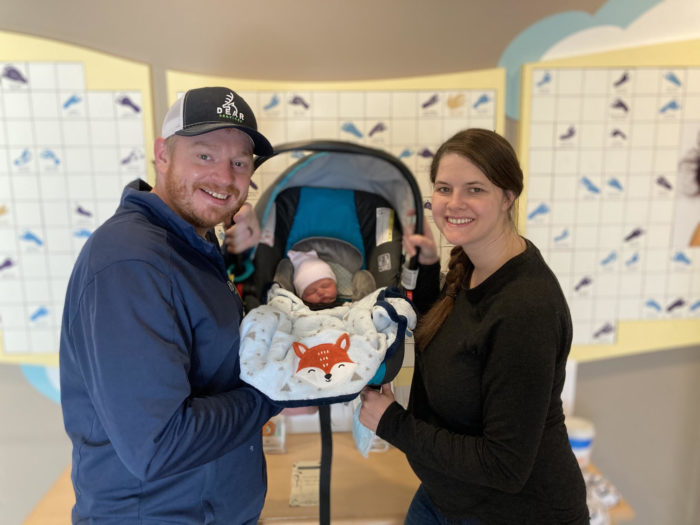
Finley’s Future
The Nelsons have the same kind of dreams for their son that most parents of sons with XLHED do.
“I hope he gets to have a more normal life than my dad. That he’s not restricted, that he can get to play outside with his friends. I want him to be able to accomplish what he wants and not have that hurdle (of XLHED).”
But, unlike generations before them, their dreams for working sweat glands and less respiratory problems may well be a reality. And this is all due to the NFED’s tenacious efforts to advance XLHED research for the last 40 years.
The NFED was very encouraging throughout the process. Mary Fete was always checking in and was very helpful. We are grateful for the support NFED gave us to get to Germany!
The NFED is incredibly grateful to all families, like the Nelsons, who were willing to step forward and participate in research for the past few decades. Their bravery may give generations to come a life filled with less worry and fear.
As for the Nelsons and their epic summer of 2020, they said that the stress was all worth it! One look at their sweet Finley, and we can see why!
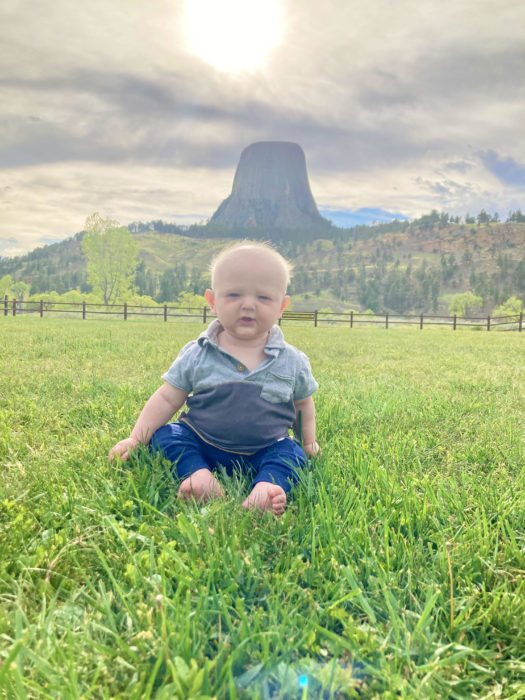
Changing the Future
The NFED is committed to developing treatments for not only XLHED but all types of ectodermal dysplasias. The key lies in research. Consider how you can be a part of life-changing therapies by making a gift today.
Boost the Cure gifts will help the NFED fund research projects and conferences, identify effective treatments, pursue potential cures, support clinical trials, and expand the understanding of ectodermal dysplasias. To learn more about what the NFED has achieved with your help – and where we are headed – please visit the Research section of our website.
The National Foundation for Ectodermal Dysplasias is a 501(c)(3) nonprofit. Donations made to the NFED are tax deductible to the extent allowable by the law.

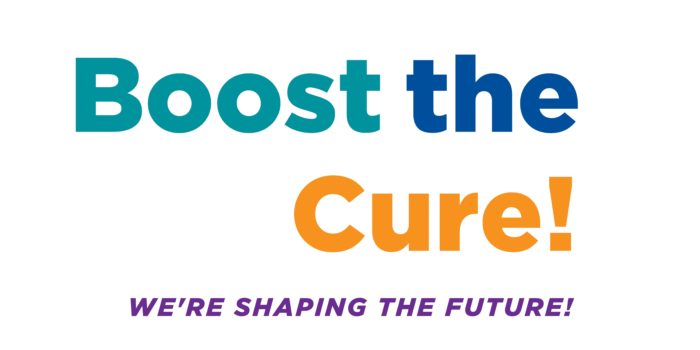
Would love to help noah on this research for his hed,he is 4
Hello, Lorraine. Thank you for keeping in touch with the NFED. We learned from prior research trials that this particular therapy has to be administered to a baby affected by XLHED in-utero. The NFED continues to work towards treatments for symptoms related to HED and all types of ectodermal dysplasia. I’m so sorry this treatment would not benefit Noah since he is four years old. Please do not hesitate to reach out to me with additional questions or just to chat. I can be reached at kelley@nfed.org or 618-566-2020.
Sincerely,
Kelley Atchison
Director, Family and Community Programs